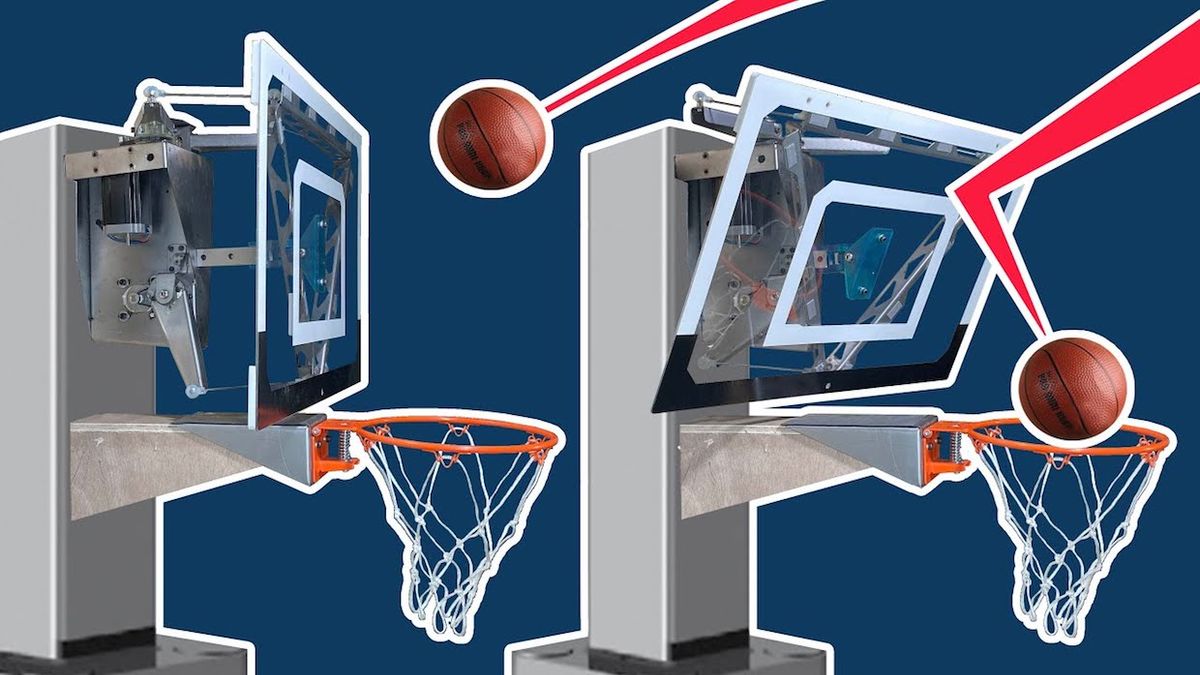Video Friday is your weekly selection of awesome robotics videos, collected by your Automaton bloggers. We’ll also be posting a weekly calendar of upcoming robotics events for the next few months; here’s what we have so far (send us your events!):
ICRA 2020—1 June 2020—[Virtual Conference]
RSS 2020—12–16 July 2020—[Virtual Conference]
CLAWAR 2020—24–26 August 2020—Moscow
ICUAS 2020—1–4 September 2020—Athens
ICRES 2020—28–29 September 2020—Taipei, Taiwan
ICSR 2020—14–16 November 2020—Golden, Colo.
Let us know if you have suggestions for next week, and enjoy today’s videos.
Boredom + robots = entertainment
[ iRobot ]
A basketball hoop that doesn’t let you miss seems like it would vastly improve the game of basketball.
[ Stuff Made Here ]
Inspired by the biomechanics of cheetahs, researchers have developed a new type of soft robots that is capable of moving more quickly than previous generations of soft robots on solid surfaces or in the water.
[ NCSU ]
A four-legged robot will be patrolling Bishan-Ang Mo Kio Park [in Singapore] to remind people of safe distancing measures starting from Friday (May 8). Called Spot, the robot will assist with safe distancing efforts at parks, gardens and nature reserves managed by National Parks Board (NParks) and at parks managed by town councils.
It’s always a little weird to see Spot deployed in contexts that don’t take advantage of its legged-ness. But it’s certainly attention-getting, I guess?
[ Straits Times ]
In-situ resource utilization (ISRU) is a sustainable way to explore space. Resources are collected and used during exploration missions for products, services or commercial purposes. Technology that collects and implements the resources that are already available on moon, planetary or asteroid surfaces in our solar system is an emerging field of research and development that is gaining significant momentum in the space industry.
Because our moon, and the area between Earth and the Moon are the most accessible, they are the most attractive areas for ISRU experimentation. The European Space Agency (ESA) is preparing a mission to demonstrate the feasibility of ISRU on the Moon. The mission aims to provide water and oxygen for human outposts, and hydrogen and oxygen fuels for space stations or similar spacecraft orbiting between Earth and the Moon.
And in case you missed our in-depth feature a couple of years ago, read how NASA plans to deploy mining robots to build and operate an ISRU rocket fuel factory on the surface of Mars.
[ PRO-ACT ]
This video of a robot using a hot wire to cut styrofoam is pretty satisfying.
[ SIGGRAPH ]
Robin is a friendly robot that can express emotions and build interactive dialogues with children. By engaging them in play and peer-to-peer conversations Robin reduces their feeling of loneliness and mitigates their stress during their hospital stay.
Kids who stay in hospitals and have to undergo lengthy and sometimes painful treatment, usually have a lack of appetite; some tend to be silent and apathetic. However, all the kids who have once interacted with Robin have shown interest in meeting it again. There were cases of improved appetite and an increase in cheerfulness after interactions with Robin. The feedback from the medical practitioners was that Robin managed to engage children in a cooperative environment and make them more communicative, which allows the medical staff to perform their duties easier and with less frustration involved.
Thanks Karen!
This is more of an automated system than a robot, but it’s fun to watch, so that’s okay.
[ Cellumation ]
This detailed and complete teardown of the Roomba i7 is actually super interesting, and it also includes a look at the evolution of the brush system.
[ iRobot ]
RSAW is designed for crawling over a variety of challenging surfaces and climbing on top of obstacles. It can reach a speed of up to 20 cm/s. The robot is developed at the Bio-inspired and Medical Robotics Lab. at the Ben Gurion University of the Negev.
[ Paper ] via [ Zarrouk Lab ]
For US $45, you too can solve line following.
[ Chris Anderson ]
“If you can’t train your dog, you can always get a Tertill.”
[ Tertill ]
How do robots see the world and specifically people? How can robots help humans? In the SOCRATES project Çağatay Odabaşi from Fraunhofer IPA is developing advanced computer vision algorithms for service robots to make them see people, objects and environments. This video specifically focusses on person detection and action recognition methods. It also introduces some of our robots and shows how those technologies can be used to interact with a person and offer some help.
[ Socrates Project ]
Get to know some of the diverse team of engineers and scientists working on NASA’s next Mars rover, Perseverance. NASA-JPL engineer Al Chen will be at the helm as the Perseverance Mars rover makes its entry, descent, and landing into the Martian atmosphere. The team is on track to launch Perseverance in July 2020 and land in Mars’ Jezero Crater in February 2021.
[ JPL ]
Embodiment is an important characteristic for all intelligent agents (creatures and robots), while existing scene description tasks mainly focus on analyzing images passively and the semantic understanding of the scenario is separated from the interaction between the agent and the environment. In this work, we propose the Embodied Scene Description, which exploits the embodiment ability of the agent to find an optimal viewpoint in its environment for scene description tasks. A learning framework with the paradigms of imitation learning and reinforcement learning is established to teach the intelligent agent to generate corresponding sensorimotor activities. The proposed framework is tested on both the AI2Thor dataset and a real world robotic platform demonstrating the effectiveness and extendability of the developed method.
[ Paper ]
Thanks Huaping!
DARPA’s Subterranean (SubT) Challenge engages international teams to deploy autonomous systems – rolling, walking, flying, and floating – to remotely map, identify, and report on artifacts discovered along underground courses. With the Tunnel and Urban Circuits completed, the Cave Circuit is coming later this year with the final event in 2021. Join AUVSI and Dr. Timothy Chung of DARPA to learn about persisting challenges with robotics, how teams are succeeding in competition while advancing unmanned capabilities, and how these lessons can benefit first responders.
[ AUVSI ]
Evan Ackerman is a senior editor at IEEE Spectrum. Since 2007, he has written over 6,000 articles on robotics and technology. He has a degree in Martian geology and is excellent at playing bagpipes.
Erico Guizzo is the Director of Digital Innovation at IEEE Spectrum, and cofounder of the IEEE Robots Guide, an award-winning interactive site about robotics. He oversees the operation, integration, and new feature development for all digital properties and platforms, including the Spectrum website, newsletters, CMS, editorial workflow systems, and analytics and AI tools. An IEEE Member, he is an electrical engineer by training and has a master’s degree in science writing from MIT.



